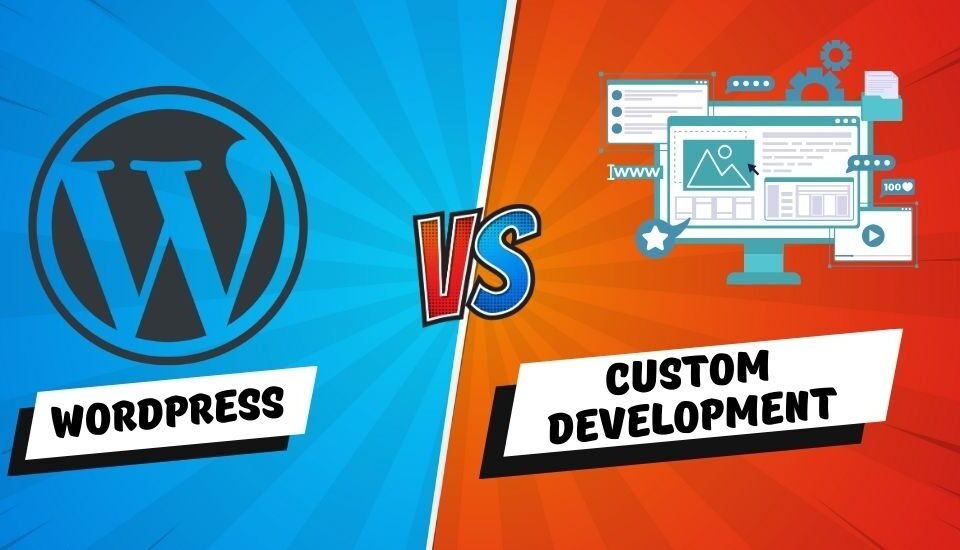- Have any Query ?
- +91-7008562317
- +91-9438140285
- webmaster@sitsindia.co.in
How to Optimize Your Website for Faster Load Times

- Introduction
- Understanding Website Load Times
- Importance for User Experience and SEO
- What Affects Website Load Times?
- Technical Factors
- User-Related Factors
- Analyzing Your Current Website Speed
- Tools for Speed Testing
- Interpreting the Results
- Strategies for Optimizing Website Load Times
- Optimizing Images
- Leveraging Browser Caching
- Minimizing HTTP Requests
- Using Content Delivery Networks (CDNs)
- Advanced Optimization Techniques
- Implementing AMP
- Streamlining CSS and JavaScript
- Database Optimization
- Mobile Optimization
- Importance of Mobile Speed
- Responsive Design and Mobile-First Indexing
- Regular Maintenance and Monitoring
- Schedule for Check-ups
- Tools for Ongoing Monitoring
- Conclusion
- FAQs
How to Optimize Your Website for Faster Load Times
Introduction
In the realm of digital interaction, the speed at which a website loads is pivotal for user engagement and search engine optimization (SEO). This aspect of website performance is not just about keeping pace with technological advancements but also about meeting the ever-evolving expectations of users. As Swadhin IT Solutions understands, a fast-loading website can significantly enhance user experience, reduce bounce rates, and improve SEO rankings.
Understanding Website Load Times
Website load time refers to the duration it takes for a page to fully display its content to a user. This time frame is critical as it directly influences a visitor’s first impression. In an age where instant gratification is sought after, even a delay of a few seconds can lead to dissatisfaction and a loss of potential customers.
Importance for User Experience and SEO
From a user experience perspective, faster load times mean higher engagement, increased satisfaction, and potentially more conversions. For SEO, Google and other search engines prioritize faster websites in their ranking algorithms. A quick-loading site is seen as a marker of quality and reliability, thus enhancing its visibility in search results.
What Affects Website Load Times?
Several factors can influence how quickly your website loads. These include:
Technical Factors
- Hosting quality and server location
- Website design and the complexity of code
- Size and optimization of images and media files
User-Related Factors
- The user’s device type and processing power
- Browser type and version
- Internet connection speed and stability
Analyzing Your Current Website Speed
Before diving into optimization strategies, it’s essential to assess your current website speed. This involves:
Tools for Speed Testing
- Google PageSpeed Insights
- GTmetrix
- Pingdom Tools
Interpreting the Results
Understanding the insights these tools provide is crucial. They not only measure speed but also identify specific areas that need improvement, such as image optimization or script minification.
Strategies for Optimizing Website Load Times
Once you’ve analyzed your website, it’s time to implement strategies to improve load times:
Optimizing Images
- Compressing images without losing quality
- Using appropriate file formats (e.g., JPEG, PNG, WebP)
- Implementing responsive images
Leveraging Browser Caching
- Storing frequently accessed resources locally in the user’s browser
- Reducing the load on the server and speeding up return visits
Minimizing HTTP Requests
- Reducing the number of elements (like scripts and images) that need to load
- Using CSS sprites to combine images
- Streamlining the overall design
Using Content Delivery Networks (CDNs)
- Distributing content across multiple, geographically diverse servers
- Ensuring faster delivery of content to users regardless of location
5. Advanced Optimization Techniques
Implementing AMP (Accelerated Mobile Pages)
AMP is a project backed by Google to ensure faster loading of web pages on mobile devices. By implementing AMP, websites can load almost instantly on mobile, providing a seamless and engaging user experience. Swadhin IT Solutions recognizes the potential of AMP in boosting mobile traffic and engagement.
Streamlining CSS and JavaScript
Minimizing and optimizing CSS and JavaScript files can dramatically reduce load times. Techniques include minifying files (removing unnecessary characters), combining multiple files into one, and using asynchronous loading for JavaScript to prevent blocking of other elements.
Database Optimization
For websites relying on databases, optimizing database queries and regularly cleaning the database can boost performance. This involves removing outdated data, optimizing tables, and using efficient query structures to reduce the time taken to fetch data.
6. Mobile Optimization
Importance of Mobile Speed
With the increasing number of users accessing websites via mobile devices, mobile speed has become critical. A fast-loading mobile site not only provides a better user experience but also ranks higher in mobile search results, following Google’s mobile-first indexing approach.
Responsive Design and Mobile-First Indexing
Responsive design ensures that your website adapts to the screen size of various devices, providing an optimal viewing experience. Swadhin IT Solutions emphasizes the importance of a mobile-first approach, where designing for mobile is prioritized, considering the increasing prevalence of mobile internet usage.
7. Regular Maintenance and Monitoring
Schedule for Check-ups
Regularly scheduled maintenance is key to ensuring that the website continues to load quickly. This includes updating content, fixing broken links, and checking for any issues that might slow down the site.
Tools for Ongoing Monitoring
Utilizing tools such as Google Analytics, GTmetrix, and Pingdom can help in continuously monitoring the website’s performance. These tools provide insights into areas that require attention and help in maintaining optimal website speed.
Conclusion
In summary, optimizing your website for faster load times is a crucial aspect of providing an excellent user experience and enhancing your SEO performance. By understanding the factors that affect website load times and utilizing the right tools and strategies for analysis and optimization, you can significantly improve your site’s performance. Advanced techniques like implementing AMP, streamlining CSS and JavaScript, and database optimization, along with mobile optimization and regular maintenance, play a vital role in keeping your website at the forefront of speed and efficiency. Remember, a fast-loading website is more than just an operational goal; it’s an essential component of your digital strategy, directly impacting user satisfaction and search engine rankings.
FAQs
Why are website load times important for SEO?
Website load times are a key factor in SEO because search engines like Google consider site speed when ranking websites. Faster websites provide a better user experience, which search engines reward with higher rankings.
How can I test my website’s current load time?
You can use tools like Google PageSpeed Insights, GTmetrix, or Pingdom Tools to analyze your website’s speed. These tools provide detailed insights and suggest areas for improvement.
What is the role of images in website load times?
Large, unoptimized images can significantly slow down your website. Optimizing images by compressing them and using the correct formats can improve load times without compromising on quality.
How does mobile optimization affect website speed?
With an increasing number of users accessing websites via mobile devices, mobile optimization is crucial. Responsive design and mobile-first indexing ensure that your website loads quickly and efficiently on mobile devices.
What are the benefits of using Content Delivery Networks (CDNs)?
CDNs store your website’s content on multiple servers around the world, allowing users to access it from the nearest server. This reduces load time and improves the user experience, especially for a geographically diverse audience.
Is it necessary to regularly maintain and monitor my website’s speed?
Yes, regular maintenance and monitoring are essential. The digital landscape and user expectations are constantly evolving, so keeping your website updated and optimized is crucial for maintaining fast load times and high performance.
Can implementing AMP really make a difference in load times?
Yes, implementing Accelerated Mobile Pages (AMP) can significantly improve load times on mobile devices. AMP is designed to create lightweight pages that load quickly, enhancing the mobile user experience.



